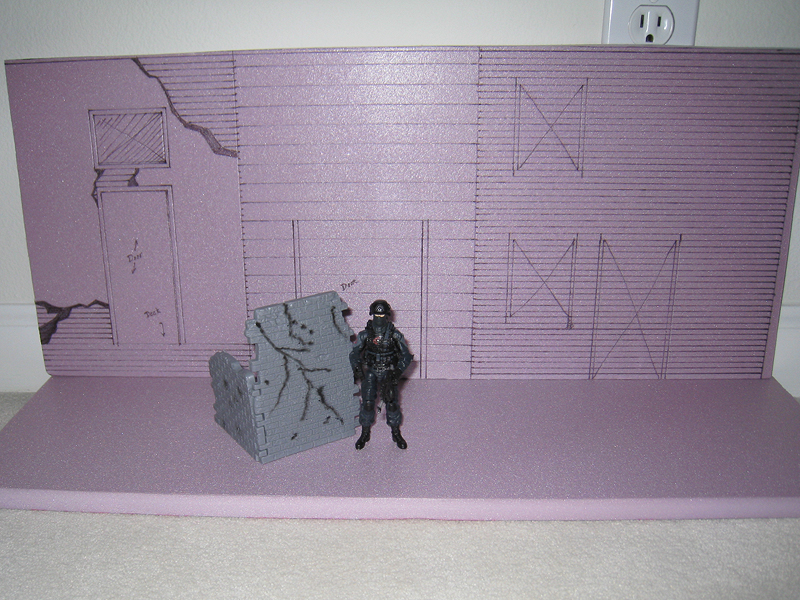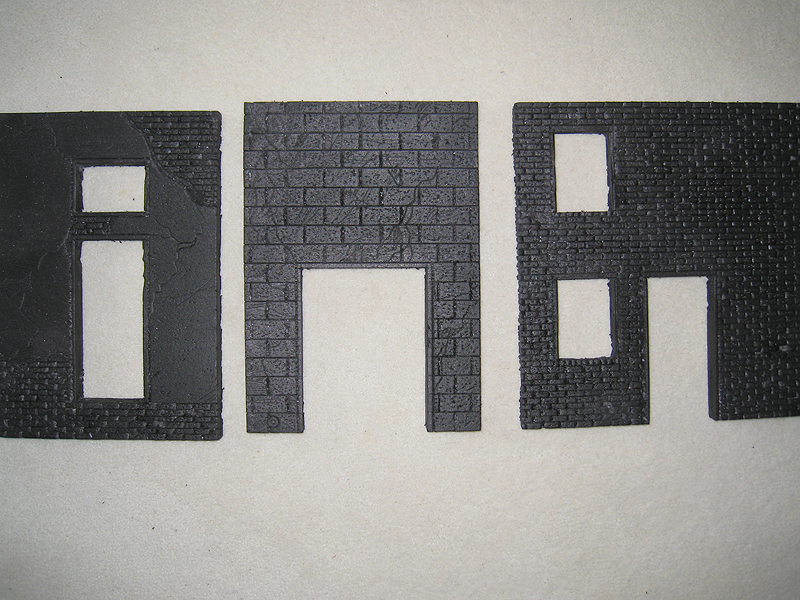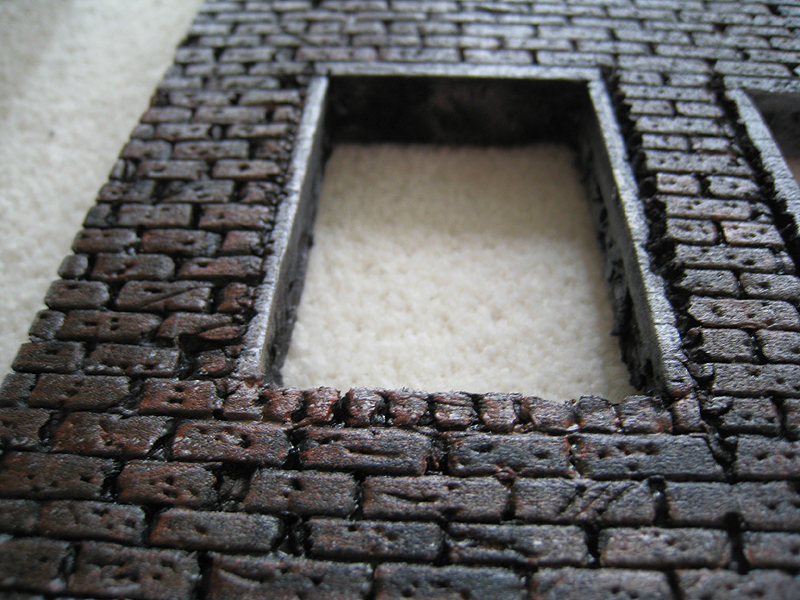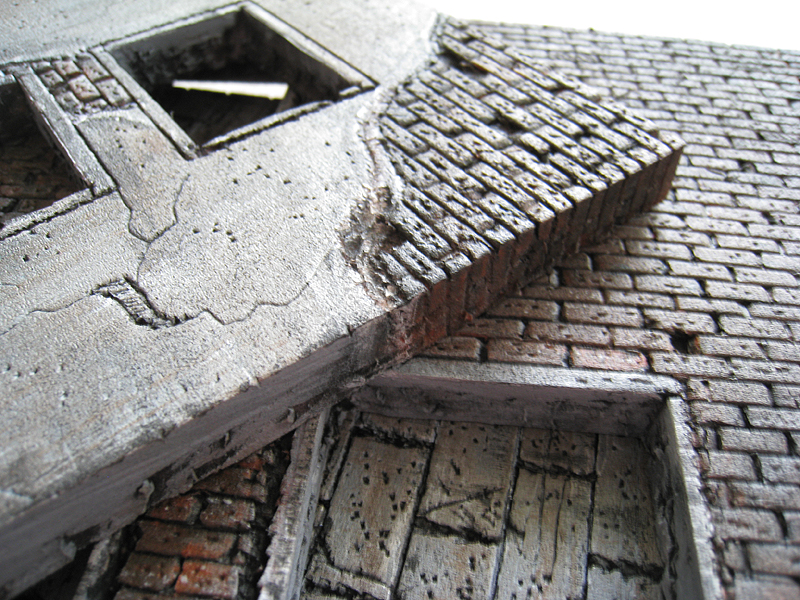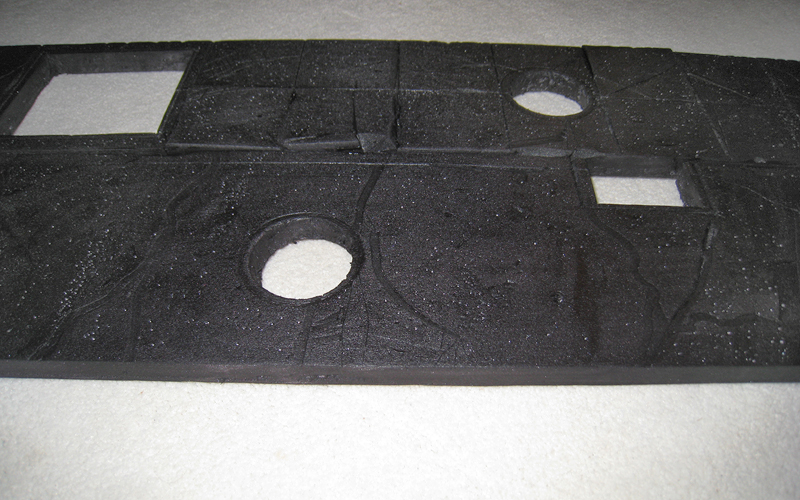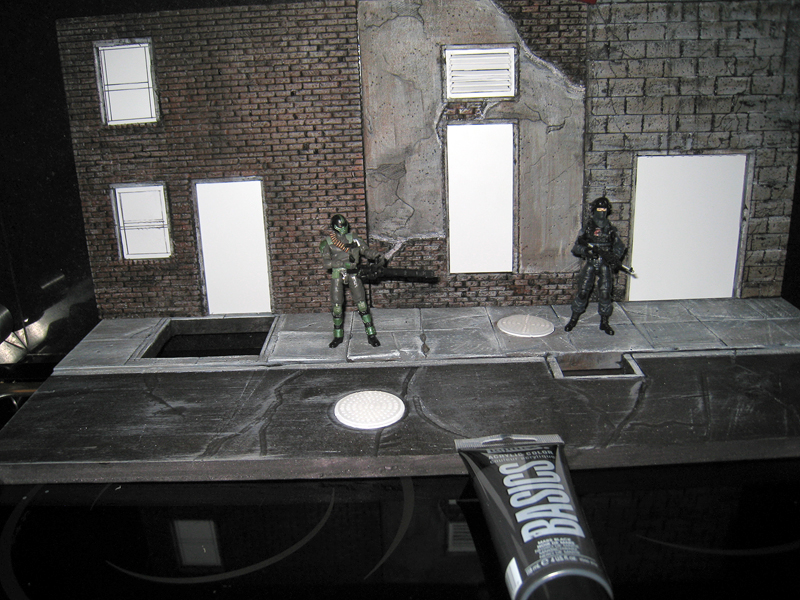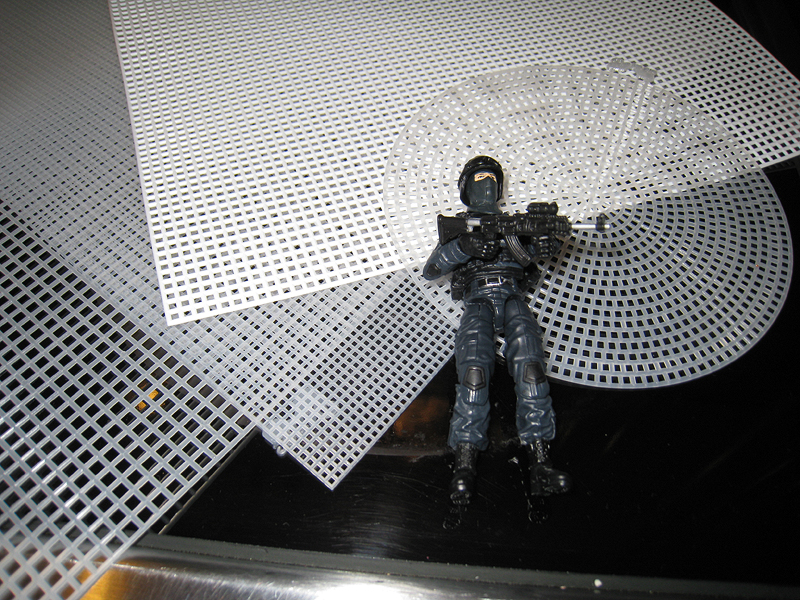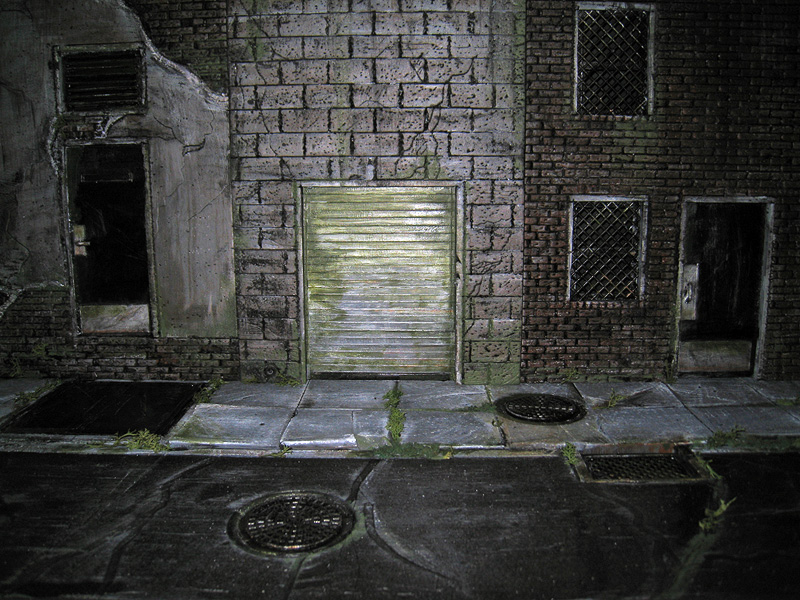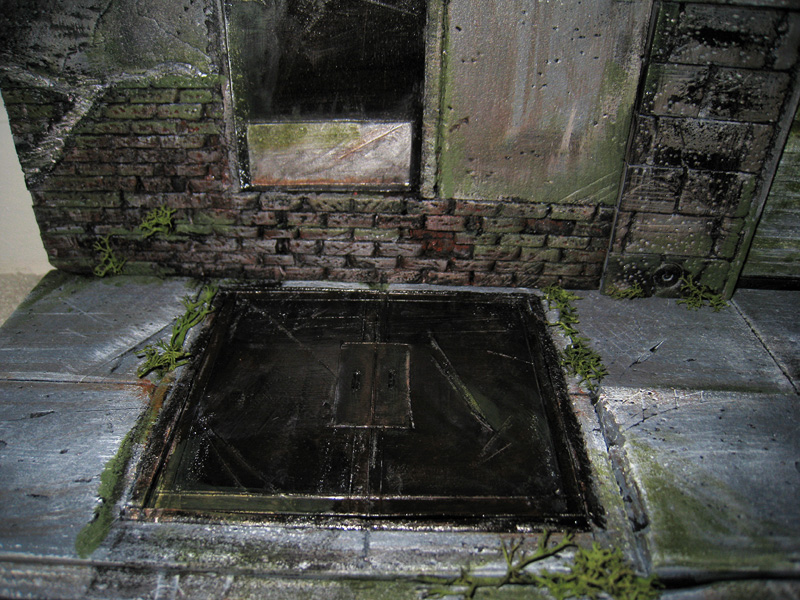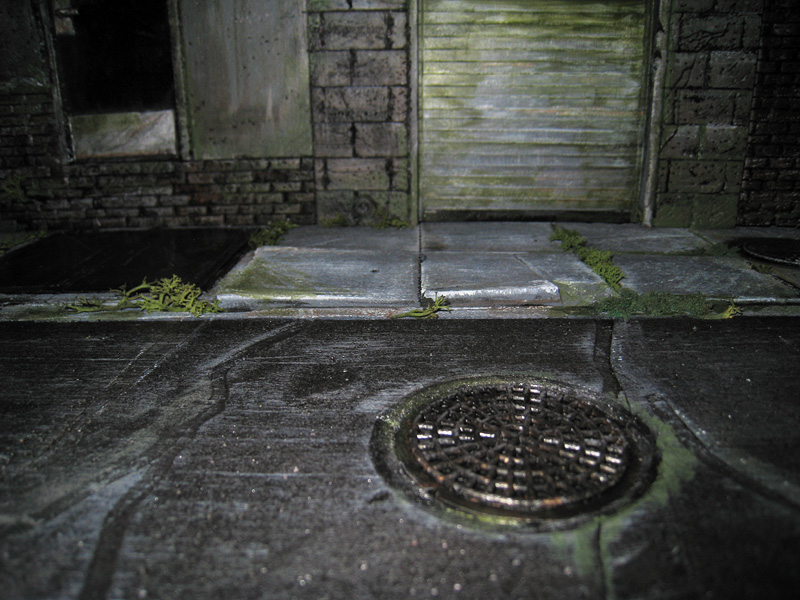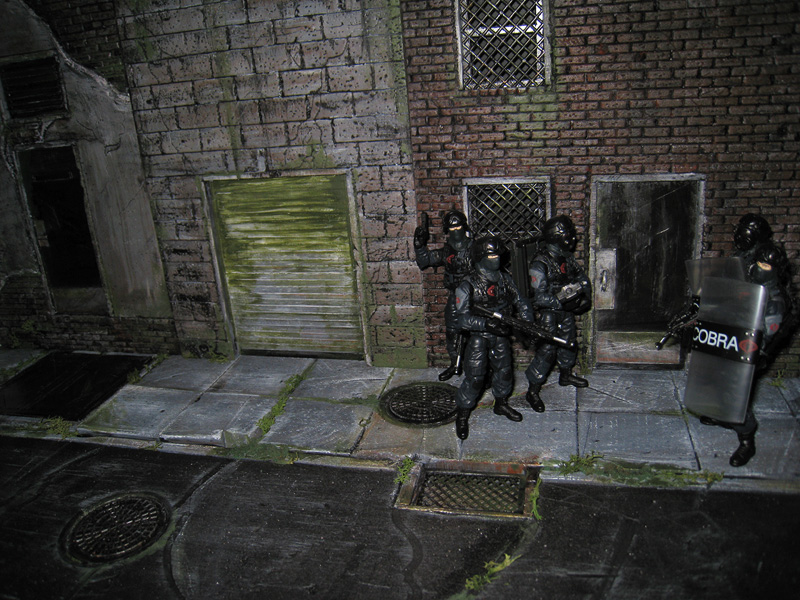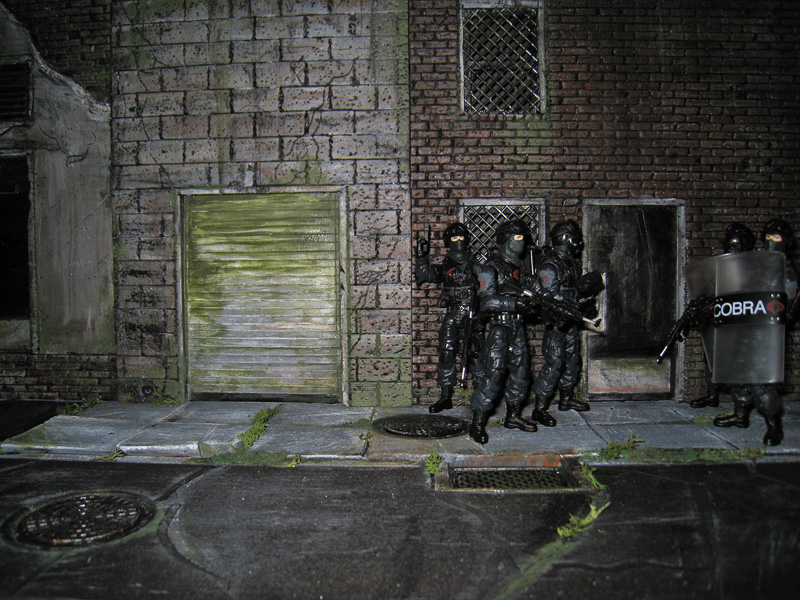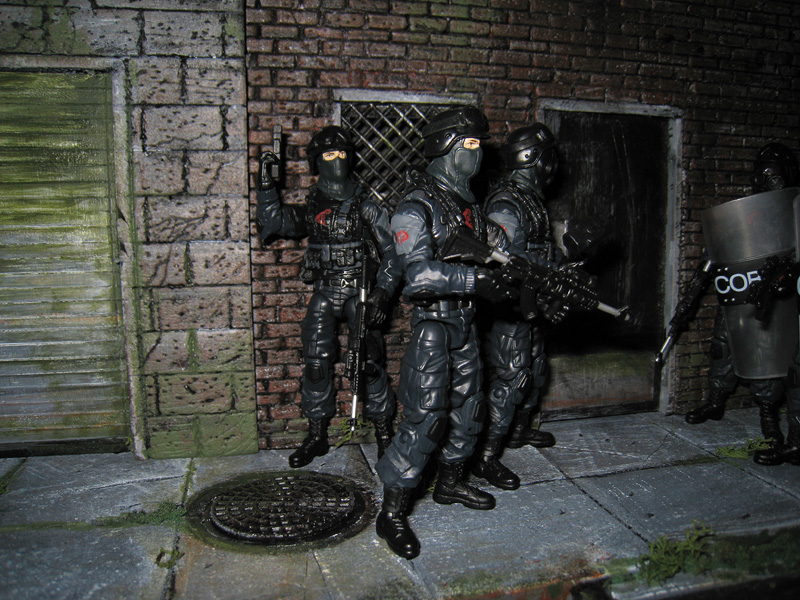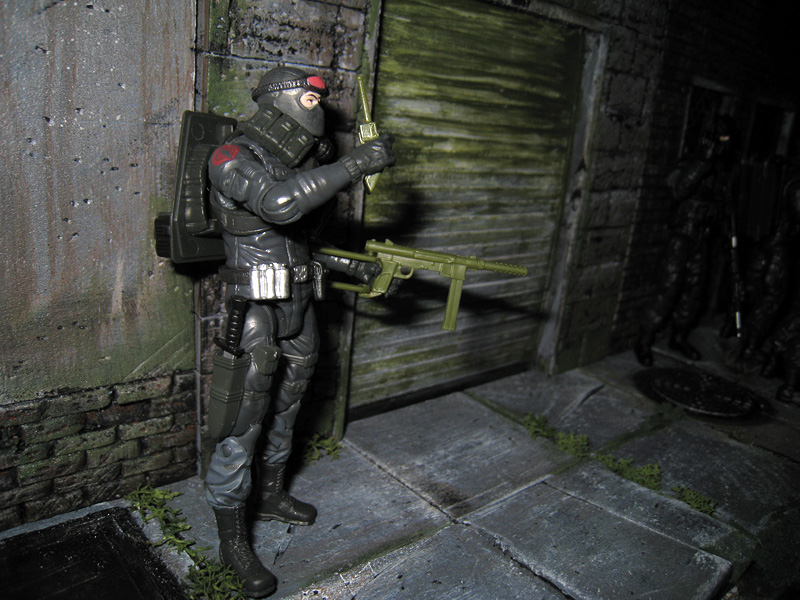INTRO:
Okay, so this isn't anything new, but something I am trying for the first "real" time in 1:18 scale, with the intent of recreating realistic diorama walls. I have worked with extruded foam before, nearly 10 years ago, in sculpting prototypes in industrial design courses in college, but never for modeling purposes.
In theory, this is the same process, just with different goals. This is the documentation of my process, which hopefully will come in handy to others.
WHAT IS IT?
Extruded foam can be found in various colors, and in different sizes and locations. Unless you're in the Bay Area like me (which has mild climates and doesn't always carry this special "cold weather" insulation material, as I've found out in a more-difficult-than-it-should-be hunt for it), you should be able to find it in most Home Depots or hardware stores, in the lumber and insulation section (at least in most areas of the country).
Dow makes a blue foam, and Owens Corning makes a pink foam (which when discolored with age, it can appear more lilac) but they're essentially the same thing and can be interchangeable for this task. Do not use the white stuff that is typically in packing material (like TV boxes, etc.) because it's made from beads and will not look that great. It has a very fine grain, and carves fairly easily.
» DOW'S BLUE FOAM
» OWENS CORNING'S PINK FOAM
I got a sheet of the pink stuff at Home Depot for roughly $15. It was 8 feet by 4 feet and .5" thick, and I had to cut it down myself to get it home in my car (due to difficult employees not willing to cut it for me) but you should be able to ask them to cut it down for you. I have had this done before in the past, but sometimes they can be difficult about it. A boxcutter should do the trick, but it's nice to get straight edges. It comes in .5 inches to 2" thick at the store I checked, and the thicker stuff would be great for making cliffs and mountain terrain. Maybe more on that later?
WHAT ELSE WILL I NEED?
There are probably endless tools and things you can use to to create textures, and to carve the foam, but here are some basics I imagine you'll need. I'll add to the list and clean up as I go.
• A PLAN (or some rough idea of what you're going to build... not necessary but a strong suggestion)
• BOX CUTTER (for heavier cutting and shaping)
• XACTOs w/replacement blades (for lighter cutting and details)
• STRAIGHT EDGE/MEASURING TOOL (ruler, t-square, block of wood... so long as it's straight)
• DREMEL TOOL (not critical, but the damn thing comes in so handy, why not?)
• GLUE (I'm going with Gorilla or wood glue, but stay tuned...)
• CARVING TOOLS (sharp stuff, blunt edges, gougy things, scratchy things... full list TBD)
• TEXTURING TOOLS (Stuff to create textures with...TBD...this will be fixed down the road)
• WOODBURNING TOOL (more details to come)
• PAINT (acrylic, water-based... enamels and spray paints are a no-no and will melt the foam!)
• CUTTING SURFACE, GOOD LIGHTING, GOOD VENTILATION! (be safe and responsible)
• FIRST AID KIT or BANDAIDS AND (see above)
• 1/18 SCALE FIGURE or something to use as a "constant" or reminder of what you're building for, and to make sure it fits and doesn't look out of scale
Bored with waiting on me to finish? Below are some excellent resource links:
» Amazing Detail Tutorial with samples and lots of pics
» Some helpful tips and tricks
» Great Foam Cutting Tutorial using heat tools (Video)
» Really Well-Done Garage Diorama
» Great Tutorial showing railroads and terrain created with sprayed expanding foam
***I'll be adding to this list... feel free to add your own links to boot)***
Okay, so this isn't anything new, but something I am trying for the first "real" time in 1:18 scale, with the intent of recreating realistic diorama walls. I have worked with extruded foam before, nearly 10 years ago, in sculpting prototypes in industrial design courses in college, but never for modeling purposes.
In theory, this is the same process, just with different goals. This is the documentation of my process, which hopefully will come in handy to others.
WHAT IS IT?
Extruded foam can be found in various colors, and in different sizes and locations. Unless you're in the Bay Area like me (which has mild climates and doesn't always carry this special "cold weather" insulation material, as I've found out in a more-difficult-than-it-should-be hunt for it), you should be able to find it in most Home Depots or hardware stores, in the lumber and insulation section (at least in most areas of the country).
Dow makes a blue foam, and Owens Corning makes a pink foam (which when discolored with age, it can appear more lilac) but they're essentially the same thing and can be interchangeable for this task. Do not use the white stuff that is typically in packing material (like TV boxes, etc.) because it's made from beads and will not look that great. It has a very fine grain, and carves fairly easily.
» DOW'S BLUE FOAM
» OWENS CORNING'S PINK FOAM
I got a sheet of the pink stuff at Home Depot for roughly $15. It was 8 feet by 4 feet and .5" thick, and I had to cut it down myself to get it home in my car (due to difficult employees not willing to cut it for me) but you should be able to ask them to cut it down for you. I have had this done before in the past, but sometimes they can be difficult about it. A boxcutter should do the trick, but it's nice to get straight edges. It comes in .5 inches to 2" thick at the store I checked, and the thicker stuff would be great for making cliffs and mountain terrain. Maybe more on that later?
WHAT ELSE WILL I NEED?
There are probably endless tools and things you can use to to create textures, and to carve the foam, but here are some basics I imagine you'll need. I'll add to the list and clean up as I go.
• A PLAN (or some rough idea of what you're going to build... not necessary but a strong suggestion)
• BOX CUTTER (for heavier cutting and shaping)
• XACTOs w/replacement blades (for lighter cutting and details)
• STRAIGHT EDGE/MEASURING TOOL (ruler, t-square, block of wood... so long as it's straight)
• DREMEL TOOL (not critical, but the damn thing comes in so handy, why not?)
• GLUE (I'm going with Gorilla or wood glue, but stay tuned...)
• CARVING TOOLS (sharp stuff, blunt edges, gougy things, scratchy things... full list TBD)
• TEXTURING TOOLS (Stuff to create textures with...TBD...this will be fixed down the road)
• WOODBURNING TOOL (more details to come)
• PAINT (acrylic, water-based... enamels and spray paints are a no-no and will melt the foam!)
• CUTTING SURFACE, GOOD LIGHTING, GOOD VENTILATION! (be safe and responsible)
• FIRST AID KIT or BANDAIDS AND (see above)
• 1/18 SCALE FIGURE or something to use as a "constant" or reminder of what you're building for, and to make sure it fits and doesn't look out of scale
Bored with waiting on me to finish? Below are some excellent resource links:
» Amazing Detail Tutorial with samples and lots of pics
» Some helpful tips and tricks
» Great Foam Cutting Tutorial using heat tools (Video)
» Really Well-Done Garage Diorama
» Great Tutorial showing railroads and terrain created with sprayed expanding foam
***I'll be adding to this list... feel free to add your own links to boot)***
Last edited:





